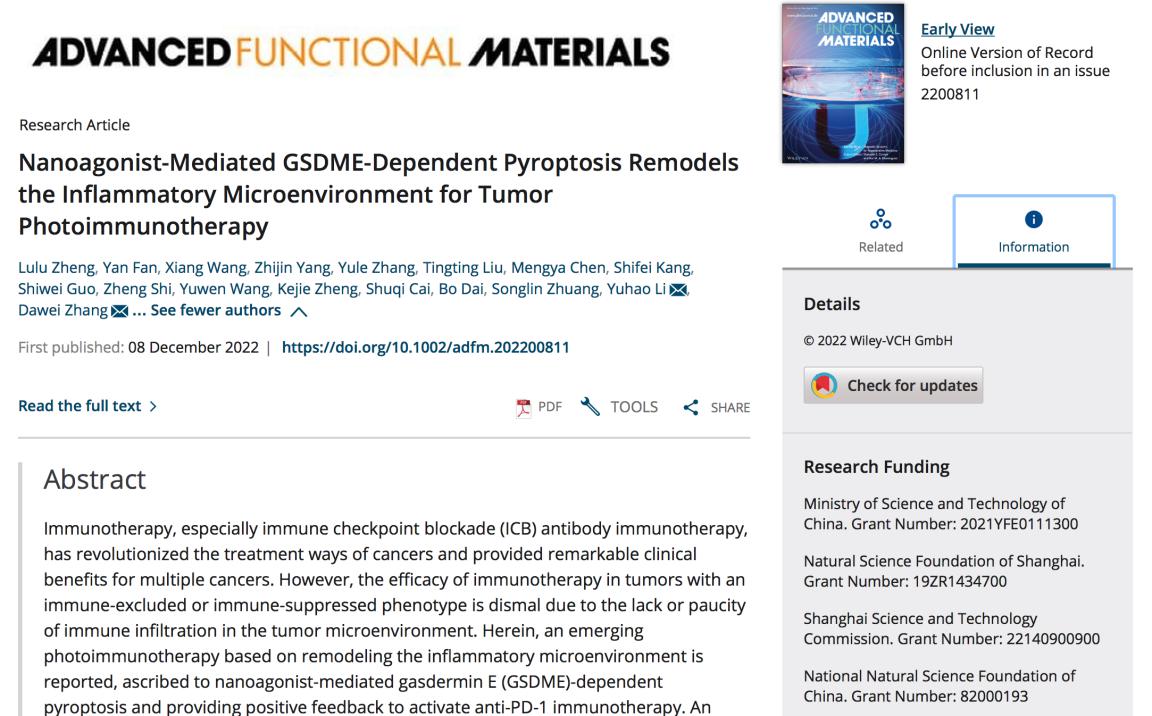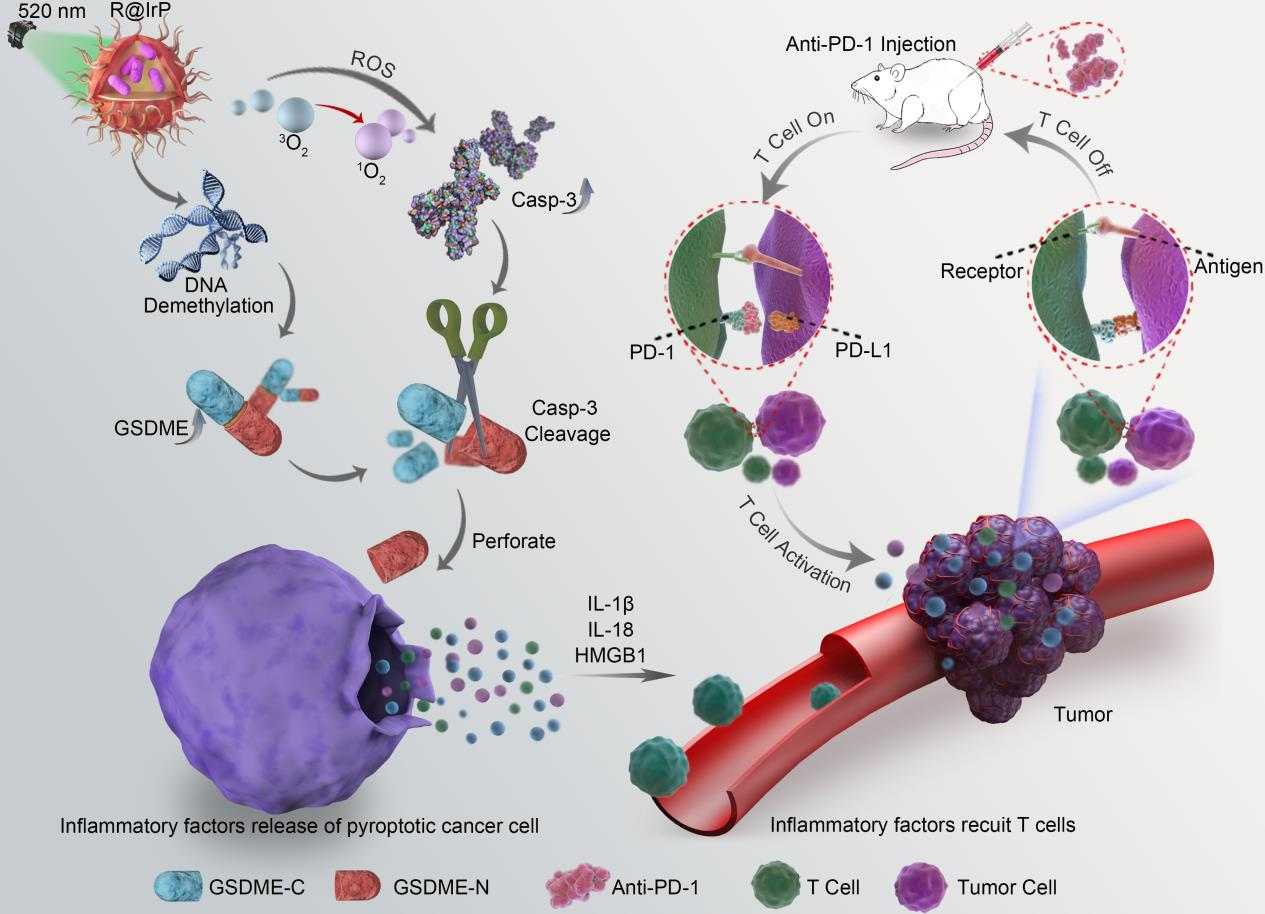Recently, the ultra-precision optical manufacturing innovation team led by Professor Zhang Dawei, academician Zhuang Songlin of University of Shanghai for Science and Technology and national talent, published a report entitled "Photoimmune-mediated GSDME dependent pyroptosis" in the international high-level journals "Advanced Functional Materials" and "Advance Functional Materials" Remodels the Inflammatory Microenvironment for Tumor Phot-oimmunotherapy), which cooperated with Xinhua Hospital and Changhai Hospital affiliated to Shanghai Jiao Tong University to research and construct a new photoimmune nanomaterial drug-loading system, which caused changes in the inflammatory microenvironment of tumor sites and enhanced the degree of immune infiltration by inducing pyroptosis of cancer cells. Activating the body's immune response and solving the problem of immune checkpoint inhibitor failure provides a new method for the treatment of melanoma. Associate Professor Zheng Lulu of the School of Optoelectronics, graduate student Fan Yan, graduate student Wang Xiang of the School of Materials and Chemistry are the co-first authors of the article, Professor Zhang Dawei of the School of Optoelectronics and Associate Professor Li Yuhao of the School of Materials and Chemistry are the corresponding authors of the article. The journal is one of the highest-level comprehensive journals in the field of international materials science under Wiley Press, which is included in the Nature Index, and the JCR division of the Chinese Academy of Sciences is a region with an impact factor of 19.924. Dedicated to reporting on breakthroughs in materials science, the journal is known for its high-quality content and high impact in areas including nanotechnology, chemistry, physics, and biology.

Figure 1 Screenshot of the paper page
Photodynamic therapy is one of the most effective methods among many tumor treatment methods, which has the characteristics of non-invasiveness and low toxic side effects. As one of the methods of programmed death, cytopyrosis is most closely related to the body's immune system and is widely used in tumor immunotherapy. However, melanoma patients lack lymphocyte infiltration in their immune microenvironment, resulting in immune-boosting drugs that cannot exert their therapeutic effect, and this tumor is called "cold tumor". In this study, combined with the principle of photodynamic therapy and apoptosis, a nanophotosensitizer IrP with iridium complex as the matrix material was designed, which can stimulate cells to produce a large amount of reactive oxygen species under the irradiation of 520nm laser, induce the expression of the cell pyrozoosis-related protein Caspase-3, and use the self-assembly characteristics of IrP to further coat the demethylated drug RG108 to construct a photoimmune nanodrug-loaded system R@IrP and reconstruct the inflammatory microenvironment of the tumor site. Promote the body's immune cells to infiltrate the tumor site, convert melanoma from "cold tumor" to "hot tumor", and combine the synergistic treatment of immune checkpoint inhibitor anti-PD-1 to maximize the efficacy of immune checkpoint inhibitor, and its therapeutic effect is increased by about 95%, which solves the problem of the failure of immune checkpoint inhibitor anti-PD-1 when acting on "cold tumor", and provides a non-invasive and efficient means for immunotherapy of melanoma.

Fig. 1 Schematic diagram of the mechanism of action of photoimmune nanomaterials in vivo
Immunotherapy has always been an important means of medical treatment of tumors today, and compared with traditional treatments, this study activates the body's own immune mechanism to the greatest extent, prevents the occurrence of immune evasion, and provides a subversive idea for tumor immunotherapy.
Article link: https://onlinelibrary.wiley.com/doi/10.1002/adfm.202200811